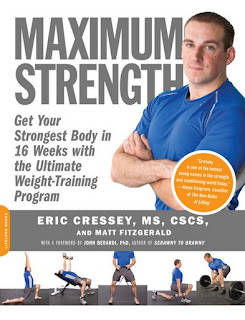Just One Missing Piece…
Written on September 15, 2008 at 8:37 am, by Eric Cressey
Each day, on my drive to work, I pass a series of traffic lights right where Rt. 16 in Somerville/Cambridge enters into Rt. 2, a pretty major pseudo-expressway here in Greater Boston. Without fail, at each traffic light, homeless folks will pace alongside stopped traffic with a cup in hand, asking for change (I’d say it’s competitive among all of them, but the truth is that they seem to have a system mapped out, as there is always someone new on each corner daily). The locals have grown accustomed to it, and judging by the fact that these folks are there year-round, they make enough to get by.
The other day, a gentlemen strolled past my car while I was stopped at a red light. He had the normal sign (“Homeless, Sober, God Bless”) and the customary Dunkin’ Donuts cup for change collection. However, he was also wearing a Yankees hat in the heart of Red Sox country – and in an area of knowledgeable/perceptive people (Harvard and Tufts are within a few miles of this spot, as a frame of reference). That hat couldn’t be helping his cause…
Here was a guy doing almost everything right (well, at least in the context of being homeless and asking for change), but he was missing out on a single crucial piece of the puzzle. It isn’t all that different from most folks’ fitness programs.
You’ll see people all the time have all sorts of stuff right: plenty of motivation, a good diet, a great training environment, top-of-the-line equipment, you name it. Then, they’re missing out on something seemingly small, but hugely important. Maybe their back hurts because they’re wearing cross-trainers when they deadlift (shifts the weight forward too much). Or, maybe they haven’t implemented strategic deloading effectively, and are all banged-up or have hit a plateau.

It might be poor exercise selection, too much or too little volume, or poor exercise technique.
It’s analogous to spending hours trying to figure out how to do your own taxes, and then overlooking a huge deduction you could have written off. You not only have to consider that you have physically lost money (the extra cash you paid to Uncle Sam would be your injuries and/or lack of progress); you also have to recognize the opportunity cost of your time doing taxes (efforts in the gym that didn’t pay off). It would have been cheaper and more fruitful to just hire an accountant in the first place – just like you’d see a lawyer if you needed a contract, or a doctor if you needed surgery.
For some reason, though, people have been conditioned to think that they can figure out exercise on their own. Just getting active is similar to understanding how to balance your checkbook. However, exercising safely, effectively, and efficiently is more along the lines of filing a tax return when you’re self-employed with three ex-wives, 14 kids, and two company cars you want to write off (that’s not me, for the record; I don’t even have a goldfish, let alone 14 kids).
What I’m saying in a not-so-concise format is that it’s okay to outsource here and there. For a long time, I refused to put out articles and books/manuals that featured comprehensive programming, as I was all about how things need to be perfect for each individual.
Eventually, though, after a lot of requests from readers, I broke down and found a happy medium when I wrote my Ultimate Off-Season Training Manual; it is a choose-your-own-adventure type of book where you tested yourself on some athletic qualities and then followed one of two programs depending on the time of year.

The feedback was fantastic, and I realized that a lot of people were better off with an educated generic template than they were coming up with their own programs. That’s why I was open to the idea of writing Maximum Strength when my co-author Matt Fitzgerald approached me with the idea. Effectively, we integrate comprehensive strength training, mobility/activation warm-ups, energy systems work, deloading, nutrition, supplementation, and quantifiable pre- and post-testing measures. For the majority of folks, these programs – with some minor modifications – do the trick.

For others, more advanced strategies are necessary. Some folks see personal trainers, physical therapists, or orthopedists. I do a lot of online consulting work in the corrective exercise realm, helping folks who have chronic aches and pains that don’t necessarily qualify them for physical therapy because they don’t interfere with activities of daily living, but do act up with weight-training or sprinting, for example. I also work with a lot of folks who have just been discharged from physical therapy and need to figure out how to effectively transition back to “normal” training.
So, with all this said, don’t ever hesitate to outsource. Chances are there are people who outsource to YOU because you’re an expert in some capacity where they need help.
Category Blog | Tags: Building The Efficient Athlete, Magnificent Mobility, Maximum Strength, Off-Season, Personal Trainers, Rotator Cuff Exercises, Rotator Cuff Rehab, Shoulder Exercises, Shoulder Health, Shoulder Impingement, Shoulder Pain, Shoulder Rehab, Strength Training, Unstable Surface Training, Weight Lifting Program, Weight Lifting Routine, Weight Training, Workout Program, Workout Routine
|












